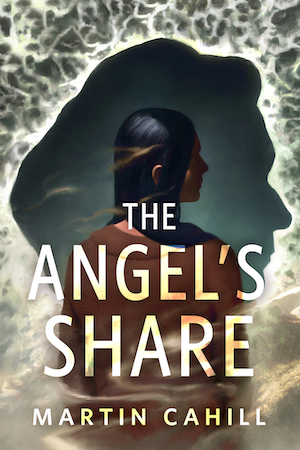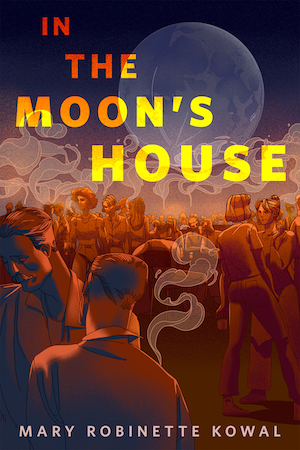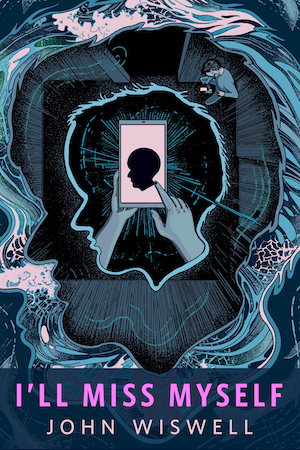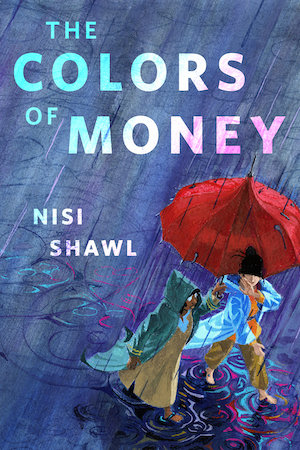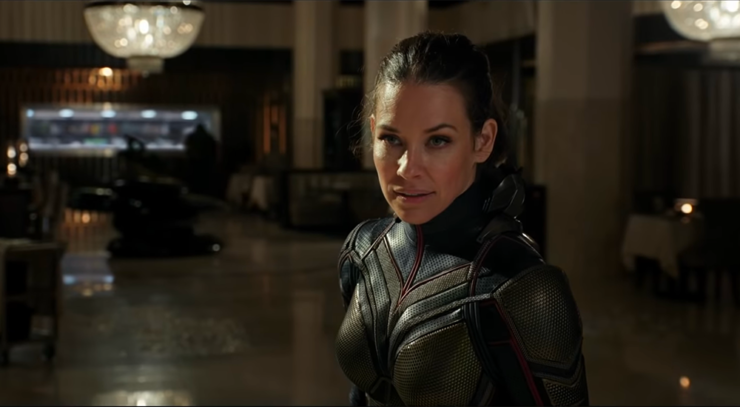With Guardians of the Galaxy in 2014 and Ant-Man in 2015, Kevin Feige had proven that he could give pretty much any Marvel character(s) a movie and they’d thrive. Despite being about a character who has at best been at the mid-range of Marvel’s heroes, Ant-Man was a huge hit, just like all the other Marvel Cinematic Universe films, and a sequel was pretty much inevitable, especially since that 2015 movie ended with Hope van Dyne being given the Wasp costume she should’ve gotten at the beginning of the film…
Peyton Reed had historically never been interested in sequels, but he took on this one for two reasons: one was that he had the chance to develop the movie from scratch, instead of coming in after development, as he had with the first film following Edgar Wright’s departure. Plus, he had become invested in the characters, and wanted to tell more stories with them.
Reed also worked on the writing of the script, though he took no credit, and apparently he, star/cowriter Paul Rudd, Andrew Barrer, and Gabriel Ferrari spent a lot of time holed up in a room together brainstorming the story.
In particular, Reed wanted to fulfill the promise of the final scene in Ant-Man and have Evangeline Lilly’s Wasp be an equal partner to Rudd’s Ant-Man.
The Wasp was introduced as Ant-Man’s sidekick in Tales to Astonish #44 by Stan Lee, H.E. Huntley, & Jack Kirby in 1963, with Ant-Man having been the star of the anthology title since issue #35. The story that introduced Janet van Dyne also provided some of Henry Pym’s backstory, revealing that he had a wife, Maria Trovaya, who was killed.
Both were founding members of the Avengers, and that became the primary place for their adventures, as they were supplanted from Astonish by the Hulk. While Pym went through multiple identities (and psychological breakdowns), van Dyne evolved from the token female character, the flighty heiress who was quick with a snappy comeback or a flirtatious remark, into a capable Avenger in her own right.
When the couple split up following one of Pym’s breakdowns in Avengers #212-214 in 1981 by Jim Shooter & Bob Hall, the Wasp truly came into her own, no longer the second half of a team. She has led various Avengers teams on numerous occasions, and proven herself to be capable and strong and powerful, and a far more important character in the grand scheme of Marvel Comics than her ex-husband ever was. (While the pair have reconciled in the comics, van Dyne has refused Pym’s re-marriage proposal.)
Ant-Man established Janet van Dyne as being lost in the quantum realm, and her and Pym’s daughter, Hope, taking on the mantle of the Wasp at the very end of the movie. Hope van Dyne is a combination of two characters from the comics: Nadia van Dyne, Pym’s daughter by his first wife, who took over as the Wasp after Janet was believed dead; and Hope Pym, the daughter of Pym and van Dyne in the MC2 alternate future, who became a villain known as the Red Queen.
Back from Captain America: Civil War is Rudd as Scott Lang, whose actions in that movie have dire consequences in this one. Back from Ant-Man are Lilly as Hope van Dyne (with Madeleine McGraw playing Hope as a little girl), Michael Douglas as Pym, Abby Ryder Fortson as Cassie Lang, Judy Greer as Lang’s ex-wife Maggie, Bobby Cannavale as Maggie’s new husband Jim Paxton, and Michael Peña (Luis), Tip “T.I.” Harris (Dave), and David Dastmalchian (Kurt) as Lang’s fellow staffers in X-Con Security. Also back from Ant-Man is the character of Janet van Dyne, now played by Michelle Pfeiffer. New in this film are Walton Goggins as Sonny Burch, Hannah John-Kamen as the Ghost (a gender-swapped version of a villain from the comics), Randall Park as FBI Agent Jimmy Woo, and Laurence Fishburne as Bill Foster. One of Pym’s many identities in the comics was Goliath, using the shrinking formula in reverse to become a super-strong giant, and for a time, Foster was the hero Black Goliath; in the MCU, Foster is established as a former S.H.I.E.L.D. colleague of Pym’s who worked on Project: Goliath.
Rudd, Lilly, and Douglas will all next appear in Avengers: Endgame (as will the X-Con Security van in one of the single funniest/greatest moments in that film). The character of Cassie Lang will also appear in Endgame, played by Emma Fuhrmann. A sequel to this film is in development with Reed confirmed to direct and presumably much of the cast of this movie coming back as well.
“You put a dime in him, you got to let the whole song play out”
Ant-Man & The Wasp
Written by Chris McKenna & Erik Sommers and Paul Rudd & Andrew Barrer & Gabriel Ferrari
Directed by Peyton Reed
Produced by Kevin Feige
Original release date: July 6, 2018
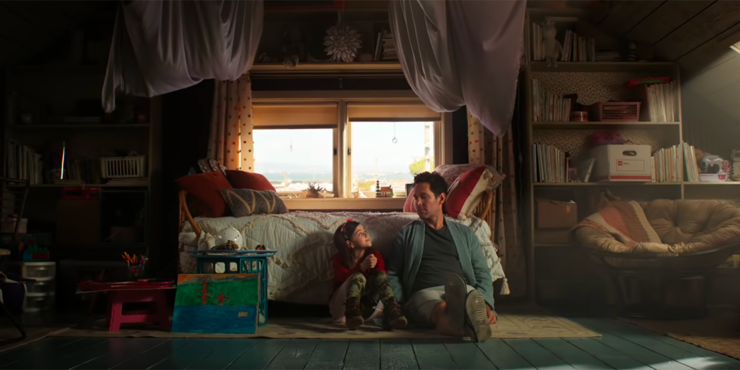
In a scene that is obviously shortly after Ant-Man’s ending (based on Hope van Dyne’s haircut), Hank Pym explains to his daughter about the final mission Janet van Dyne undertook. She shrunk so far when she stopped the missile that she went into the quantum realm. But the fact that Scott Lang went into the quantum realm and managed to return gives Pym hope that Janet is still alive.
Jump ahead two years. Following the events of Civil War, Lang has agreed to a plea deal where he lives under house arrest for two years and probation for several years after that. (He presumably made this deal before Captain America broke folks out of prison.) He hasn’t spoken to Pym or van Dyne in that time—they’re seriously pissed at him. Lang’s way of coping is to take full advantage of his weekends with his daughter Cassie, creating elaborate heists out of stuff around the house. (The item they have to “steal” is the “World’s Greatest Grandma” trophy that Cassie got Lang as a present once, because it was the only trophy the store had. It’s his prize possession, and he says it must never leave the house.) Lang is regularly checked up on by Agent Jimmy Woo of the FBI, who reminds him that Pym and van Dyne are fugitives, and contacting them would invalidate his deal. Which would be a shame, as he’s only got three days left.
Lang, along with Luis, Dave, and Kurt, have formed X-Con Security, which Lang helps run from his house, with the others on site in their office. They’re hoping to score a big contract.
That night, Lang has a very vivid dream about the quantum realm, and then he finds himself in a memory of Janet van Dyne’s, including finding a little girl in a wardrobe. He digs a flip phone out of the wall, apologetically calls Pym, and leaves a long voicemail telling him about the dream. Then he breaks the phone.
The next day, Lang is kidnapped by van Dyne, who takes him to a lab where Pym and van Dyne have been experimenting with a quantum bridge. (They left behind a giant ant wearing his ankle bracelet with instructions to follow Lang’s usual routine.) They activated it the bridge the night before, but it burned out after a few seconds. A minute later, Lang called with his dream story. The details of the dream match a memory of van Dyne’s from her childhood. Janet is alive, and they have to get her. Pym and van Dyne are still pissed at Lang for going to Germany to help Captain America without even checking with them first, and now they’re fugitives because of him. Lang also confirms that he followed government orders to destroy the Ant-Man suit.
They need another component to keep the bridge from burning out. After shrinking the building with the lab in it to suitcase size, they go off to a meet. While Pym and Lang observe in the van, van Dyne meets with Sonny Burch, their tech dealer, who’s a bit shady—but since they’re fugitives, they can’t be fussy about who they deal with. Unfortunately, Burch has learned van Dyne and Pym’s real names and that they’re wanted by the FBI. He plans to turn them over—unless they sell him their lab. They refuse, and so Burch refuses to sell the component. In response, van Dyne puts on her own suit as the Wasp and attacks. She makes very short work of Burch’s thugs, and takes the component and the money from Burch.
However, someone else arrives to take the component—a woman wearing a white suit with a hood, who can phase through matter. She manages to get her hands, not just on the component, but also on the lab.
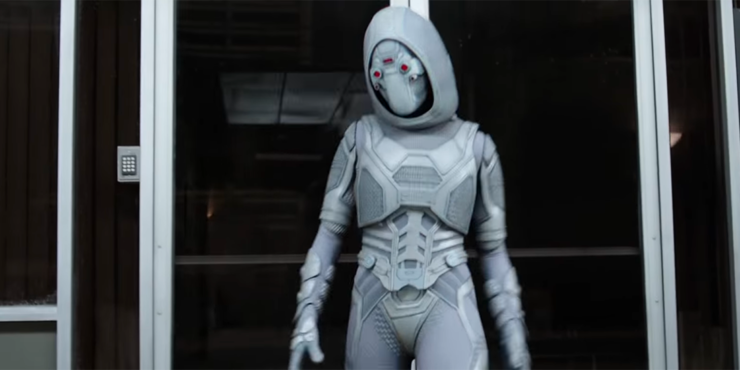
With nowhere to go, they hole up at X-Con, where Lang learns that he has a very small desk. Reluctantly, Pym agrees to consult with a former colleague, now a college professor, Dr. Bill Foster. There is no love lost between Foster and Pym, who worked together on Project: Goliath during their S.H.I.E.L.D. days. Foster and Lang compare growth stories—Foster only got as big as twenty-one feet, but Lang grew to sixty-five feet in Germany.
They stop comparing sizes long enough for Foster to suggest using a component in the regulators to track the lab. The problem is that Pym has upgraded the regulators in the new suits he created, and they no longer have that component. That’s when Lang admits that he didn’t actually destroy the Ant-Man suit—he shrunk it down and taped it to the bottom of the World’s Greatest Grandma trophy. They leave the university, the FBI on their heels (though Foster lies and says he hasn’t seen Pym in thirty years.)
When they return to the Lang house, the trophy is gone, and Lang realizes that Cassie absconded with it to use for show-and-tell at school. Lang and van Dyne infiltrate the school using the new Ant-Man suit Pym made, which doesn’t have all the kinks worked out yet—at one point, he’s stuck at about three feet tall, though Pym is eventually able to fix it.
(Before they go into the school, van Dyne asks Lang why he didn’t ask her to come with him to Germany to help Cap. Lang doesn’t say, “Because Marvel Studios didn’t want another girl in the movie, apparently,” but he does ask if she would’ve come if he’d asked. She doesn’t answer that question, but does say that if she had gone, he wouldn’t have been caught. Which mostly makes me really wish that van Dyne had been in Civil War. But I digress.)
Pym is able to cannibalize the older regulator to make a tracker for the lab, and they find it in an old house. The Ghost is there also, and she’s able to take all three of them down and tie them to chairs. It turns out she’s working with Foster, who set them up. The Ghost is Ava Starr, the daughter of another of their former S.H.I.E.L.D. colleagues, Eli Starr. Pym had him fired from S.H.I.E.L.D. and also disgraced in the scientific community for his poor work on the previous version of the quantum bridge. Starr tried to build a quantum bridge on his own, and it exploded, killing Starr and his wife, but leaving their daughter Ava alive—but stuck out of phase with reality, her molecules constantly separating and coming together. S.H.I.E.L.D. sent Foster to take care of her, and they made the suit that keeps her alive. S.H.I.E.L.D. (and, probably Hydra) used her as a covert operative, and when S.H.I.E.L.D. collapsed, Foster took her in and has been trying to help her.
They think that if she absorbs quantum energy from Janet, she can be cured, or at least helped a lot. They need Lang’s connection to her for that. Pym fakes a heart attack, convincing Foster to grab his pills—but the pill box contains ants that grow to large size when the box is opened and who free all three of them. They’re able to escape, and they grow the lab in the woods.
Luis calls Lang because he needs a change on the presentation to the potential client. Lang tells Luis where he is so he can come over and they can fix the presentation together. Meanwhile, Pym and van Dyne can open the bridge—and as soon as they do, Janet is able to take over Lang’s body and rewrite the code for the bridge so that she can be found. But they only have two hours—after that, the quantum realm will shift and they won’t be able to contact her for another century.
Burch shows up at X-Con Security and uses truth serum on Luis. This is a mistake, as Luis is motormouthed at the best times, and the sodium pentathol only makes it worse. However, he reveals that the lab is in the woods. (And also that X-Con is in danger of going out of business, and if they don’t get this contract, they’re toast.)
However, the Ghost was also eavesdropping, and she now knows where Pym and van Dyne are. Burch has also called a contact in the FBI (who’s on Woo’s team) and passes that information on to Burch, in exchange for that agent making sure Burch gets the lab.
Luis calls Lang to let him know what happened. Lang apologizes, and he also has to get home, as Woo will go straight to his house first.
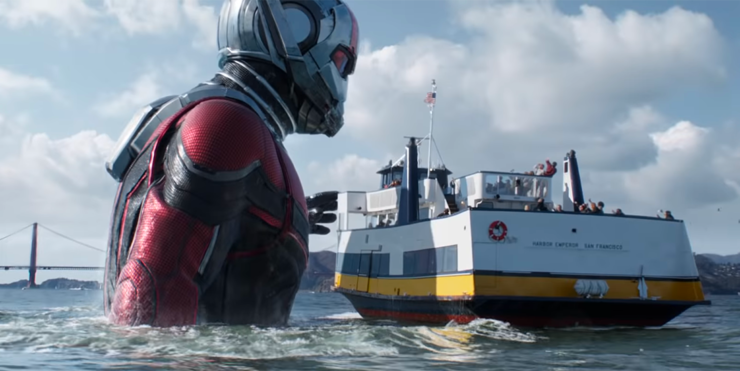
Pym and van Dyne reluctantly and angrily shut down the bridge and prepare to bugger off. However, as soon as Pym shrinks the lab, they see dozens of federal agents pointing guns at them.
Woo gets to the Lang house to see Lang himself present and accounted for (with some help from Cassie, who covered for him). After Woo and his people leave, Cassie convinces Lang that he needs a partner to help him. Cassie’s thinking of herself, but Lang is thinking of van Dyne. He also, with Cassie’s blessing, breaks Pym and van Dyne out of FBI custody with help from ants and both the Wasp suit and an FBI hat and windbreaker, which were shrunk and brought into interrogation by Lang.
They escape, and go after the lab, which the Ghost took from Burch’s pet agent. A merry chase goes through San Francisco, as Burch goes after the lab, as do Lang, van Dyne, and Pym, with help from Luis. (At one point, van Dyne accidentally shrinks the car of a civilian, who looks just like Stan Lee.)
Pym goes into the quantum realm after Janet, having convinced Foster that he’ll help the Ghost when he’s done. Burch goes after them again, and winds up with his hands on the shrunken-down lab. Lang has to go giant to get it from him, once he boards a ferry. But after he gets it back, the Ghost shows up and grows it to normal size right there on the street.
In the quantum realm, Pym is able to retrieve Janet. The couple is reunited and they go back to reality. Janet is able to ease the Ghost’s pain, and promises to work to fix her condition. Kurt and Dave tase Burch and his goons before they can try anything else, while Lang leaves the Ant-Man suit, giant-sized but empty, on a street.
Lang is freed from his house arrest, since the FBI has no proof that he ever left. Pym and Janet are able to vacation together, Lang is able to walk around free (he has dinner with his Maggie, Jim, and Cassie), and he also takes van Dyne and Cassie to a homemade drive-in theatre, using a shrunken car and a laptop.
Pym, van Dyne, and Janet, in order to fulfill their promise to the Ghost, send Lang into the quantum realm via a smaller version of the bridge that they’ve placed in the X-Con Security van (complete with its horn that plays “La Cucaracha”). Lang goes in, retrieves the quantum particles he needs to help the Ghost—but when he calls for extraction, there’s no answer on the other end, because the other three are all victims of Thanos snapping his fingers and wiping out half the population of the universe. Which we’ll get into in more depth next week…
“You can do it—you can do anything! You’re the world’s greatest grandma!”
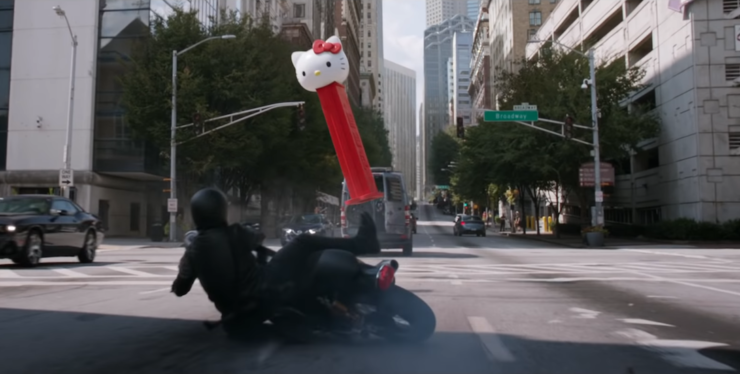
I enjoy this movie so much more than its predecessor, and not just because it finally puts the Wasp front and center where she belonged all along. (In case I didn’t make that particular complaint clear, ahem ahem.)
For starters, it builds beautifully on the first movie, keeping the light, breezy tone that Peyton Reed and the writers all brought to the proceedings. The two Pym Particle movies are not trying to save the world from armageddon or huge-ass threats, they’re smaller scale, and tremendous fun for all that.
On the Blu-Rays of the MCU movies, there’s an option for an introduction by the director, and while they don’t add all that much to the proceedings, truly, I do like what Reed says in his: that these movies are about family. The heart of these two movies are relationships between parents and children.
And also about sundered relationships. In this movie, the two main antagonists are antagonists precisely because Pym is an asshole. In fact, everything that happens in this movie is because Pym is an arrogant snot. It’s interesting, he’s a completely different type of arrogant snot than Tony Stark, who’s way more narcissistic and self-centered. Pym simply believes he’s the smartest person in the room, and he’s not willing to brook anyone who will interfere with his work. This led to him dismissing and ruining Starr’s reputation and to sundering his friendship with Foster.
For that matter, you could argue that it led to his own fugitive status. The only reason why Lang was under house arrest was because Pym thought it made more sense to recruit a thief ex-con to wear the Ant-Man suit to stop Cross than it was to let his daughter do it, even though—as we see writ large in this movie where van Dyne kicks all the ass—she was much more qualified for it. And then Lang went and hied off to Germany (thanks to a relationship of sorts formed with Sam Wilson when he went to steal something from Avengers Compound on Pym’s orders) and got himself in trouble.
Parents’ love for their children—and vice versa—informs much of the film, from the deep father-daughter bond between Cassie and Lang (the World’s Greatest Grandma trophy is the best thing ever) to Janet’s equally deep bond with Hope seen in the flashbacks to Foster’s taking care of the Ghost to the Ghost herself, condemned to a lifetime of suffering because she ran back into the lab to make sure her Daddy was okay.
It’s also slots nicely into the overall storyline of the MCU without being obnoxious about it, from things like the fallout from the Sokovia Accords affecting the lives of Lang, Pym, and van Dyne to Pym and Foster’s time in S.H.I.E.L.D. being part of the tapestry of the storyline, including the fallout from the organization’s destruction in Captain America: The Winter Soldier. Plus, of course, the mid-credits scene.
While I’m rewatching this before the Infinity War/Endgame two-parter, it’s important to note that this (and Captain Marvel, which I did several weeks ago) came out between the two Avengers movies in question. This worked out really nicely to keep fans of the movies sated with something between the two big epics. Where Marvel provided flashback backstory, Ant-Man & The Wasp was more of a palate cleanser: something simple and fun and delightful while we wait to find out what happened after half the universe got dusted.
Plus, naturally, we get that mid-credits scene where Lang is trapped in the quantum realm because Pym and the van Dynes were all dusted. Best of all, the events of this movie will actually be very important to the plot of Endgame.
None of which has a huge impact on this movie, which is, again, tremendous fun. Paul Rudd’s quotidian portrayal of Lang as just a guy trying to survive the weird life he’s been plunged into is a lot of the source of the movie’s charm. He’s kind of a low-key version of Ryan Reynolds’s Deadpool for the MCU: making silly comments and truthful ones, as well. I particularly love him deriding the choice of disguise when they first visit Foster of baseball caps and sunglasses. “We look like ourselves at a baseball game!” Lang opines, a nice dig at all the other MCU films that have assumed that ballcaps and shades are sufficient camouflage. I adore his pointing out that Pym seems to just put “quantum” in front of everything to make it sound cooler…
I must also sing the praises of Hannah John-Kamen, who gives us what most of the best villains in the MCU have given us: a villain we understand, and maybe sympathize with a little bit. Ava Starr has led a completely miserable life, and while it isn’t entirely Pym’s fault—her father’s attempt to re-create a failed S.H.I.E.L.D. experiment in a homemade lab wasn’t the brightest idea in the world—it’s understandable why she blames Pym for some of it, and John-Kamen beautifully plays the anguish and agony that the Ghost has to live with. You don’t want her to win, obviously, but you understand why she’s fighting our heroes.
Evangeline Lilly is magnificent, giving us a Hope van Dyne who is superbly confident and superlatively competent. She’s very good at what she does, and I adore how she uses everyday objects for her own benefit, shrinking or growing them as needed, whether it’s using a giant salt shaker as a barricade or—the best damn moment in the movie, despite being given away by the trailers—using a giant Hello Kitty! Pez dispenser as a missile. I particularly like how there’s no doubt at any point that Burch is in way over his head dealing with her, and Burch himself doesn’t realize it until it’s too late.
Burch himself is a bit disappointing, but he has his moments. Walton Goggins is one of the finest actors of our time (his work on The Shield and Justified is some of the best stuff you’ll see on TV), and this role is not entirely worthy of his great talents. Having said that, it’s fun to have a little The Shield reunion with him and Michael Peña’s Luis—the pair played partners for one season of that great cop show.
Speaking of whom, Luis remains one of the best characters in the MCU with his rapid-fire commentary and overly detailed stories (his summary of the Lang-van Dyne relationship is classic). I still think it was a missed opportunity to not have Luis sum up Infinity War at the beginning of Endgame, but alas. (They made up for it by having the X-Con Security van play a hilarious but important role in the latter movie, at least.)
The supporting cast is strong, as well. Abby Ryder Fortson is adorable and a great helpmeet as Cassie. Even more so than Goggins, Judy Greer and Bobby Cannavale are pretty much wasted in this movie, though I do like that they’ve all reconciled and become a strong family in the wake of the events of Ant-Man. Laurence Fishburne—last seen in this rewatch playing Perry White—is a delight as Foster, while Michelle Pfeiffer—last seen in this rewatch playing Catwoman—is luminous in her too-little-screentime role as Janet. (Rudd playing her when Janet possesses Lang is also hilarious.) Although, as I asked in my Aquaman rewatch, is having main characters’ mothers played by female leads in 1990s Batman movies be trapped in a nether realm of some sort for three decades going to be a trope now?
At the time of its release, this was an enjoyable little interlude between two big, heavy Avengers movies. Rewatching it now, it fits comfortably with Black Panther and Spider-Man: Homecoming in showing the fallout from Civil War. One of the useful things about doing a series of connected films like the MCU is that actions can have consequences. This movie works just fine on its own, absolutely, but it also comes about due to the events of several previous movies (The Winter Soldier, Avengers: Age of Ultron, Civil War, and, of course, Ant-Man) and also provides an important plot detail for an upcoming one.
Next week, ten years’ worth of movies come to a head as we cover Avengers: Infinity War.
Note: Your humble rewatcher is doing a crowdfund for a couple new short stories in his original fantasy universes: “The Gorvangin Rampages: A Dragon Precinct Story” and “Ragnarok and a Hard Place: A Tale of Cassie Zukav, Weirdness Magnet.” Check it out!
Keith R.A. DeCandido will be a guest at PhilCon 2019 this weekend in Cherry Hill, New Jersey. He’ll be doing a bunch of panels (including a speculative one on Marvel’s Phase 4), a reading for the upcoming Across the Universe, an autographing, and he’ll also be MCing the masquerade Saturday night. His schedule can be found here.


